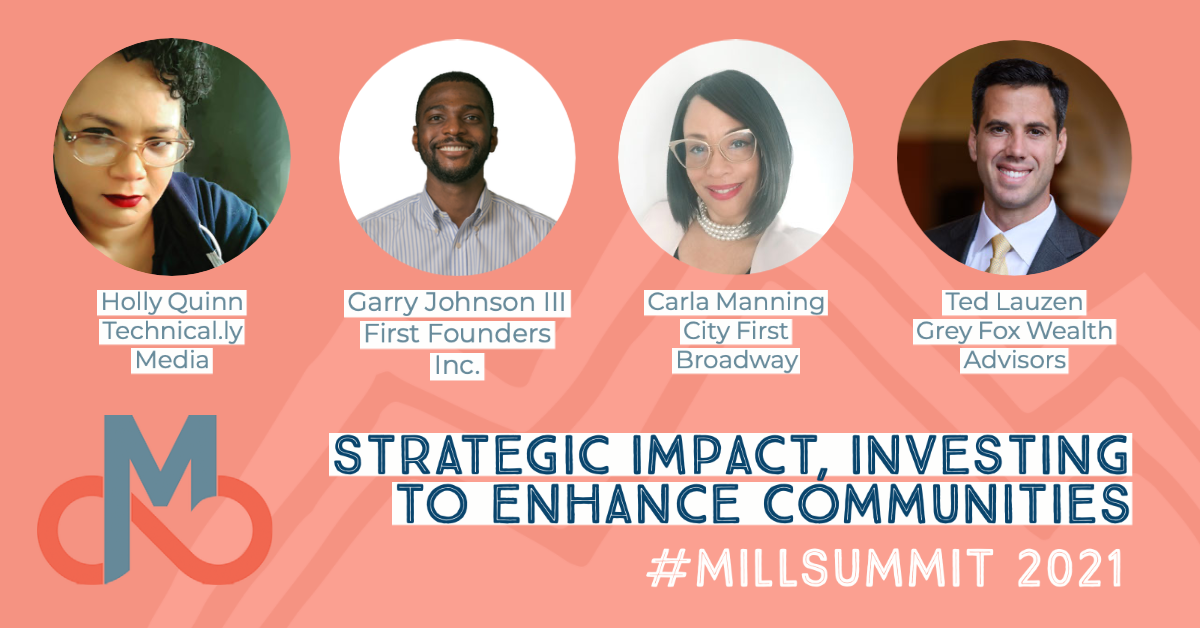Private investment can have a huge impact on a community. And investing in communities that lack wealth and resources comes with financial incentives that can benefit both the investors and the community itself.
On the final morning of the 2021 Millennial Summit, this reporter sat virtually with three experts in the realm of social impact investing for the panel “Strategic Impact, Investing to Enhance Communities.” Carla Mannings, SVP and relationship manager for City First Broadway; Ted Lauzen, a partner at Grey Fox Wealth Advisors; and Garry Johnson III, the founder and executive director of First Founders Inc., shared advice and insight on the subject, followed by a Q&A session.
If you don’t think you have the wealth to invest in the community, either with a traditional real estate investment, by launching a startup, establishing a program or opening a space, there are a few terms and organizations you need to know about that help people get involved with community investment:
CDFI, or community development financial institutions
CDFIs generate economic growth in underserved communities. They specifically serve entrepreneurs of color, low-income entrepreneurs and other disadvantaged groups by providing loans and training to help them overcome issues related to raising capital for their businesses, which can include a lack of financial education. CDFIs often offer more affordable rates than commercial banks and financial institutions.
City First Broadway is a Black-owned CDFI, and the first banking institution to become a certified B Corp. It serves five states, including Delaware.
“We’re able to finance a lot of small businesses and retail businesses, with a focus in small businesses that generate $3 million or less,” Manning said. “We’ve allocated $543 million in flexible capital in these projects.”
New Markets Tax Credit
Established in 2000 by Congress, this program aims to to attract investment capital into low-income areas by establishing a tax credit against the investor’s federal income tax of 39%.
“What that that means is for our borrowers,” Manning said, “is that this is actual cash equity into projects and programs that are normally not affordable.”
Opportunity Zones
“Everyone’s heard of Opportunity Zones, but details get lost,” Lauzen said. “They are essentially census tracts identified by state governors who believe that they could be improved by investment.”
There are three tax incentives for this tool meant to drive economic development: temporary deferral of capital gains, a step-up on the basis of previous invested gains, and a permanent exclusion of the long-term holdings.
“If you hold an investment in the community for more than 10 years, any additional growth from what you invested in is tax free,” he said. “That’s a huge win for investors and the community. It’s flexible capital that can be used in classic real estate or investment with existing businesses or startup ventures.”
Reg CF, or Regulation Crowdfunding
Until pretty recently, you had to be an accredited investor to invest in young and promising businesses. Consequently, “only wealthy people and families could take advantage of these wealth-creating opportunities,” Johnson said.
Reg CF allows for everyday people to invest in startups through platforms like Wefunder or Republic for as little as $100. Startups can raise up to $5 million — and, unlike raising funds on a platform like GoFundMe, investors receive equity if the startup is successful.
Community Development Bankers Association
The national association for the community development banking sector. Through its website, you can search for nearby resources for loans for community enhancing projects and businesses.
United Nations Sustainable Development Goals
“Many CDFIs identify their mission through the UN’s Sustainable Development Goals,” Manning said. “They include ending poverty, education, healthcare. Many CDFIs will talk about what goals they identify with it, so you can match your dollars with your mission.”







